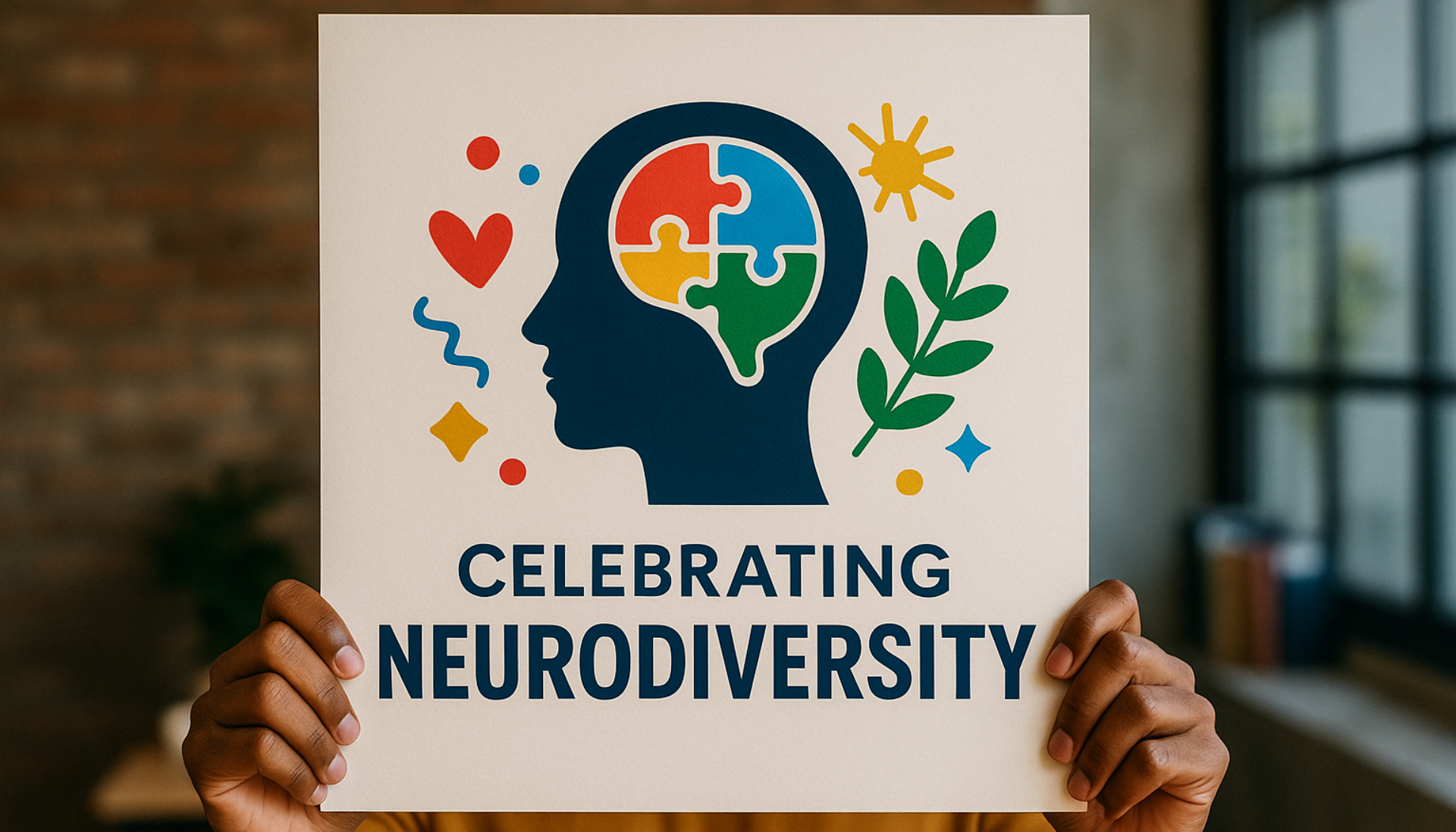Beyond the ATS: How Semantic Search and AI Are Changing Candidate Discovery
Here's an uncomfortable truth that most recruitment leaders won't admit: your current ATS is actively sabotaging your ability to find the best candidates. While you've been religiously adding keywords to job descriptions and hoping for algorithmic magic, the most talented professionals have been slipping through your digital fingers – not because they lack the skills, but because they don't speak your system's rigid language.
The recruitment technology revolution isn't coming. It's here. And it's fundamentally rewriting the rules of candidate discovery in ways that make traditional keyword-based systems look as outdated as fax machines in a WhatsApp world.
Welcome to the age of AI candidate search technology, where understanding context matters more than matching words, and where the smartest recruitment teams are already gaining an almost unfair advantage over those still stuck in Boolean search hell.
The Death of Keyword Tyranny
Let's start with a reality check. Traditional Applicant Tracking Systems have created a recruitment bottleneck that's costing the industry millions in missed opportunities. According to recent data, 70% of enterprise-size businesses in the UK use ATS software to screen CVs, but here's the kicker: these systems are fundamentally flawed.
The Problem with Keyword Matching
Picture this scenario: You're hiring a "Frontend Developer" and your ATS dutifully scans for those exact words. Meanwhile, a brilliant candidate describes themselves as a "UI Engineer" or "React Specialist." Your system? It treats them as invisible. They never make it past the first digital gate, regardless of their actual capabilities.
This isn't a hypothetical problem. Research shows that qualified candidates are being overlooked because their CVs don't contain exact keyword matches, even when they possess all the required skills using different terminology.
The traditional approach treats language like a computer programme – rigid, literal, unforgiving. But here's what the recruitment industry is finally waking up to: human communication doesn't work that way.
The Scale of the Missed Opportunity
The numbers are staggering. In early 2024, the market value of AI recruitment technology stood at $661.5 million and is expected to grow to $1.1 billion by 2030, underscoring the massive investment flowing into solutions that actually work.
Meanwhile, 48% of UK recruitment agencies have adopted some form of AI technology, and 42% of UK tech firms are using AI to screen and recruit candidates in 2024. The writing is on the wall: recruitment teams that cling to outdated keyword matching are falling behind fast.
Enter Semantic Search: The Game Changer
What Semantic Search Actually Means
Semantic search represents a fundamental shift from matching words to understanding meaning. Instead of looking for exact keyword matches, semantic search recognises synonyms, related terms, and even industry jargon. When you search for "software development," the system understands that "coding," "programming," or "engineering" are relevant and related.
This contextual understanding allows systems to recognise that a "front-end developer" might be qualified for a "UI engineer" role, even if their CV doesn't contain that exact phrase. The technology moves beyond superficial resume scanning to identify individuals whose experience aligns with position requirements.
The Technical Foundation
Semantic search is powered by vector search technology, which encodes details of searchable information into fields of related terms or items, called vectors, and then compares vectors to determine which are most similar. This approach enables semantic search to deliver and rank content based on context relevance and intent relevance.
Unlike keyword search engines that use query expansion tools like synonyms or word omission, semantic search returns query results that match meaning through the use of vector search. The result? A more sophisticated understanding of candidate fit that goes far beyond surface-level matching.
Real-World Impact
Consider the practical implications. Semantic search technology transforms the evaluation of candidate fit by identifying meaningful skill matches rather than relying on keyword density. This approach allows for more nuanced assessment of candidates' capabilities, moving beyond superficial resume scanning.
For recruitment professionals, this means an end to the trial and error of keyword matching, allowing them to find candidates based on the actual intent and context when particular words are mentioned on a CV.
Machine Learning: Beyond Pattern Recognition
Understanding vs. Following Rules
Here's where many recruitment teams get confused about AI. Automating a task doesn't make it intelligent. True AI in recruiting technology learns from patterns over time, adjusting predictions based on results, not just rules.
The distinction matters enormously:
- Rules-based systems: Follow pre-defined instructions (like auto-rejection emails)
- Actual AI: Systems that learn from data, recognise patterns, and make increasingly better predictions
Machine learning algorithms can scan vast databases of CVs and online profiles to identify potential candidates, significantly reducing time spent on initial screening while ensuring broader search capabilities that encompass passive candidates.
Natural Language Processing in Action
Natural Language Processing enables recruiters to use natural language queries like "Find candidates with healthcare experience who have led teams and worked in startups" rather than struggling with Boolean search strings that require technical expertise to execute effectively.
Large Language Models analyse the intent and meaning behind words, rather than just focusing on literal matches. This enables identification of synonyms, related skills, and transferable experiences, creating a more comprehensive understanding of candidate suitability for roles.
Predictive Analytics: The Strategic Advantage
Beyond Reactive Hiring
Predictive analytics enables organisations to transition from reactive to proactive recruitment, ensuring sufficient time to make informed decisions rather than rushing to fill urgent vacancies.
By using statistics and learning from existing data, predictive analytics helps forecast future outcomes such as identifying strong hires for open positions, making quicker and better offers to candidates, and providing improved candidate experiences.
The Predictive Cycle in Practice
The process follows a clear methodology:
- Data Collection: Gathering data from various sources including CVs, applications, social media, job boards, applicant tracking systems, and internal databases
- Data Processing: Cleaning, organising, sampling, and formatting data for accurate analysis
- Model Training: Providing the model with historical data so it can learn from patterns and make increasingly accurate predictions
- Prediction Generation: Applying trained models to new datasets to predict recruitment outcomes
- Strategic Action: Using predictions to alter recruitment strategies and improve outcomes
Measurable Business Impact
The results speak for themselves. Companies using predictive analytics can reduce costs associated with bad hires, repeated recruitment efforts, and extended vacancies.
Real-world case studies demonstrate impressive outcomes:
- Google reduced the number of interviews per candidate and cut median hiring time from 180 days to 47 days using analytical insights
- Xerox reduced attrition rates by 20% within six months by using predictive analytics to identify personality trait indicators of successful employees
UK Market Reality: Adoption and Regulation
Current Adoption Landscape
The UK recruitment market is experiencing rapid AI adoption, but with significant variation across sectors. A study by the Institute of Student Employers found that the use of AI in recruitment has tripled in the last year, with around 3 in 10 employers using AI to recruit candidates in 2023, compared to just 1 in 10 in 2022.
However, adoption isn't uniform. Research from Ernst & Young found that 90% of large businesses in the private sector have adopted AI into their recruitment process, while the British Chamber of Commerce reported that 48% of UK SMEs have no plans to implement AI into their recruitment process.
Regulatory Framework Development
The UK government is taking AI in recruitment seriously. The UK Information Commissioner's Office issued a detailed report on the use of AI in recruiting following consensual audits conducted between August 2023 and May 2024 with developers and providers of AI-powered sourcing, screening and selection tools.
Additionally, the previous UK government issued Responsible AI in Recruitment guidance in March 2024, establishing frameworks for ethical AI implementation in hiring processes.
Economic Impact Projections
A study by PwC estimates that AI could create 7.2 million jobs in the UK by 2037, while also displacing 7 million jobs, resulting in a net gain of 200,000 jobs. The recruitment industry will play a crucial role in managing this workforce transition.
Implementation Strategy: Getting It Right
Starting with Clear Objectives
According to IQTalent's 2025 report, organisations that align AI recruiting tools with clear objectives report up to a 48% increase in diversity hiring effectiveness and a 30-40% drop in cost-per-hire.
Before implementing any AI solution, recruitment teams need specific goals:
- Reducing time-to-hire for specific role types
- Improving quality of hire metrics
- Expanding candidate pool diversity
- Enhancing candidate experience scores
Data Quality Foundation
High-quality data is essential for effective predictive analytics. Organisations must ensure their data is accurate, complete, relevant, and regularly updated.
Since data often comes in different formats—structured databases, text-based CVs, video interviews—using natural language processing and data normalisation techniques is essential to create consistency.
Technology Integration Approach
Understanding candidate intent and behaviour starts with capturing clean, structured data across the entire talent journey. When that data is unified and accessible, AI can recognise patterns, predict intent, and personalise experiences.
Successful implementation requires choosing technology partners whose platforms can capture and connect data across every interaction—from sourcing and screening to engagement and interviewing.
Bias Prevention and Fairness
Predictive analytics can perpetuate biases if not implemented carefully. To avoid bias, recruitment teams should:
- Use diverse data sources to minimise risk
- Monitor predictive models for signs of bias
- Take corrective action when issues are identified
- Regularly audit algorithms for fairness across demographic groups
The Competitive Advantage Reality
Speed and Quality Improvements
According to SHRM, 88% of companies that use AI in recruitment do so because it saves them time and increases efficiency. But the benefits extend far beyond speed.
AI-powered screening systems identify qualified candidates within minutes by grading candidates according to keywords, algorithms, and recruitment data. This automation allows recruiters to focus on high-value activities like candidate engagement and cultural fit assessment.
Enhanced Candidate Experience
Using AI for candidate experience helps maintain responsive, proactive communication. Conversational AI chatbots can maintain high levels of communication with candidates simultaneously, handling limitless interactions while responding to questions, scheduling interviews, and delivering feedback.
Diversity and Inclusion Impact
AI systems can help reduce unconscious bias when properly implemented. By focusing on skills and qualifications rather than background factors, AI systems can help identify qualified candidates from underrepresented groups who might otherwise be overlooked.
Woodie's employed AI to transform its diversity recruitment, achieving a 300% increase in ethnic minority hires and a 200% increase in women hires, demonstrating the technology's potential for promoting inclusion.
Platform Selection: What Actually Matters
Transparency Over Black Box Solutions
One misconception is that semantic search is a mysterious "black box" process. However, the aim is for a transparent system where users can adjust their searches and understand why certain results are returned.
When evaluating AI recruitment platforms, prioritise solutions that provide clear explanations for their recommendations. Skills and qualifications should be marked as proven (explicit and demonstrated), mentioned, inferred (via context), or missing, giving recruiters insight into the system's reasoning.
Integration Capabilities
Disparate systems limit predictive capability. Companies should prioritise integrated talent acquisition platforms to get a 360-degree view of the recruitment process.
Look for platforms that can seamlessly integrate with existing HRIS, ATS, and communication tools rather than creating additional silos.
Scalability and Learning
The best AI recruitment systems improve over time. The more data your model processes, the better its accuracy will be. Choose platforms that can scale with your organisation's growth and continuously learn from your hiring outcomes.
The Human Element: Enhanced, Not Replaced
Augmentation vs. Automation
AI-powered technology is meant to speed up time-consuming manual processes so recruiters can focus on more valuable human-initiatives; AI is not meant to replace human recruiters.
The most successful implementations enhance human capabilities rather than attempting to eliminate human judgment. As more of the talent acquisition process is touched by technology, recruiters are spending more time "talking to candidates, selling candidates, selling managers, and pairing the right folks together".
Strategic Relationship Building
Advanced semantic search engines streamline the candidate search process and decrease sourcing costs, giving organisations a competitive edge. This efficiency gain allows recruitment professionals to invest more time in relationship building and strategic candidate engagement.
Quality of Human Interaction
People want to know where they're going to work, who they're going to work with. Even when technology supports the process, maintaining human presence and genuine connection remains crucial for successful recruitment outcomes.
Future-Proofing Your Recruitment Strategy
Emerging Technology Trends
Artificial intelligence will get even better at matching candidates to jobs. Advanced algorithms will pick up on subtle signals that indicate success, leading to better hiring outcomes.
Forward-thinking companies will know what talent they need before positions are even open. Predictive models will forecast skill requirements based on business goals, eliminating talent gaps.
Skills-Based Hiring Evolution
According to NACE Job Outlook 2024, less than 40% of employers use educational qualifications as a main screening factor, highlighting the shift away from academic-focused hiring toward skills-based evaluation.
AI-powered skills assessments match candidates to roles based on specific, tangible skills and real-world industry knowledge rather than factors that don't necessarily equate to success.
Proactive Workforce Planning
The most advanced organisations are moving beyond reactive hiring to predictive workforce planning. This involves using AI to forecast future talent needs based on business growth projections, market trends, and internal mobility patterns.
The Implementation Roadmap
Phase 1: Foundation Setting (Months 1-3)
- Data Audit: Assess current data quality and standardise collection processes
- Objective Definition: Establish clear, measurable goals for AI implementation
- Stakeholder Alignment: Secure buy-in from leadership, IT, and legal teams
- Baseline Measurement: Document current recruitment metrics for comparison
Phase 2: Pilot Implementation (Months 4-6)
- Platform Selection: Choose AI tools that align with objectives and integrate well
- Limited Deployment: Start with one role type or business unit
- Team Training: Provide comprehensive training on new tools and processes
- Process Documentation: Create new workflows incorporating AI insights
Phase 3: Scaling and Optimisation (Months 7-12)
- Performance Analysis: Compare AI-assisted outcomes to baseline metrics
- Process Refinement: Adjust algorithms and workflows based on results
- Full Deployment: Roll out successful approaches across all recruitment activities
- Continuous Improvement: Establish ongoing monitoring and optimisation processes
The Strategic Choice
The recruitment industry stands at an inflection point. The companies winning the talent war in 2025 aren't those with the most advanced AI; they're the ones using AI most intelligently.
The Cost of Inaction
Using AI reduces the average cost of hiring a candidate by 71%, while recruiters save an average of 4.5 hours per week by using AI. These aren't marginal improvements—they're transformational advantages that compound over time.
Meanwhile, candidates are adapting faster than many recruitment teams. 46% of UK job seekers are using AI in their job search, meaning they're already operating with enhanced capabilities while many recruiters remain constrained by outdated systems.
The Opportunity Window
As technology advances, data-driven recruitment will be the norm, not the innovation. Companies that implement predictive analytics and semantic search now will become employers of choice, attracting better candidates and building stronger teams.
The question isn't whether AI candidate search technology will transform recruitment—it already has. The question is whether your organisation will be among the leaders shaping this transformation or among the followers struggling to catch up.
The Recruitment Imperative
Predictive analytics takes talent acquisition from intuition to evidence-based decision making. In an increasingly competitive talent market, this shift from gut feeling to data-driven precision isn't just an advantage—it's becoming essential for survival.
The most talented candidates have choices. They're drawn to organisations that demonstrate innovation, efficiency, and respect for their time. Your recruitment process is often their first impression of your company's operational sophistication.











